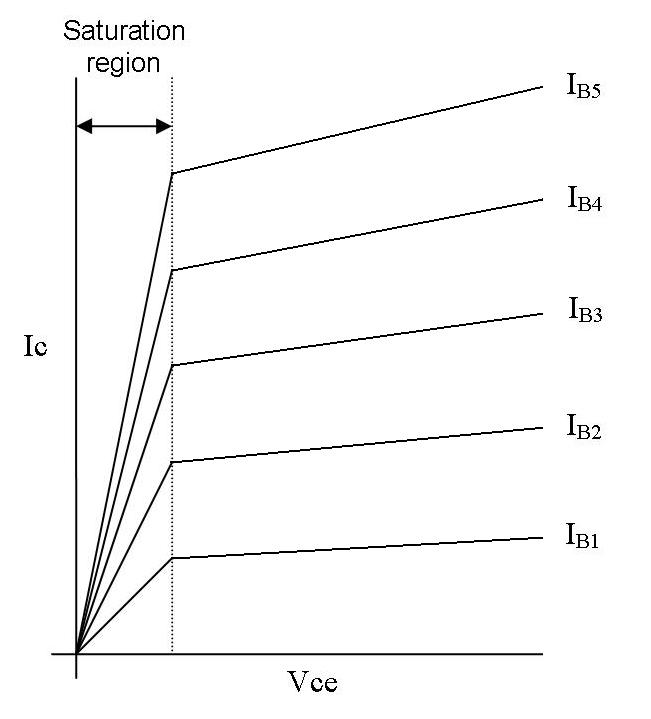I'm trying hard to understand the different modes and regions of operation of BJTs. The behavior of transistor in saturation region is so confusing. I've searched in forums but couldn't get a convincing answer. Here is what I've understood. Correct me if I'm wrong.
So a Transistor enters saturation region when the collector-base junction is forward biased. This happens when the base current increases causing a proportionate increase in the collector current and decrease in voltage across the collector (\$V_{CE} = V_{CC} - I_CR_C\$).
What happens after the transistor enters saturation? I know that \$V_{CE}\$ will be very small (around 0.2V) and the transistor will behave as a closed switch. But what exactly will be the collector current?
Can I now view this as two back to back forward biased diodes?
Why is the current will be maximum in saturation region? Why doesn't further increase in base current cause changes in collector current?
And if you see the \$V_{CE}\$ characteristics in the saturation region (see the image below), the curves are bunched together. \$I_C\$ actually approaches zero as \$V_{CE}\$ is around 0.2V (which is nearly the voltage across collector in saturation). But should we not have maximum current in saturation region?
I'm missing some crucial point. The characteristic curves in Saturation region are completely confusing. Help me understand this :(



